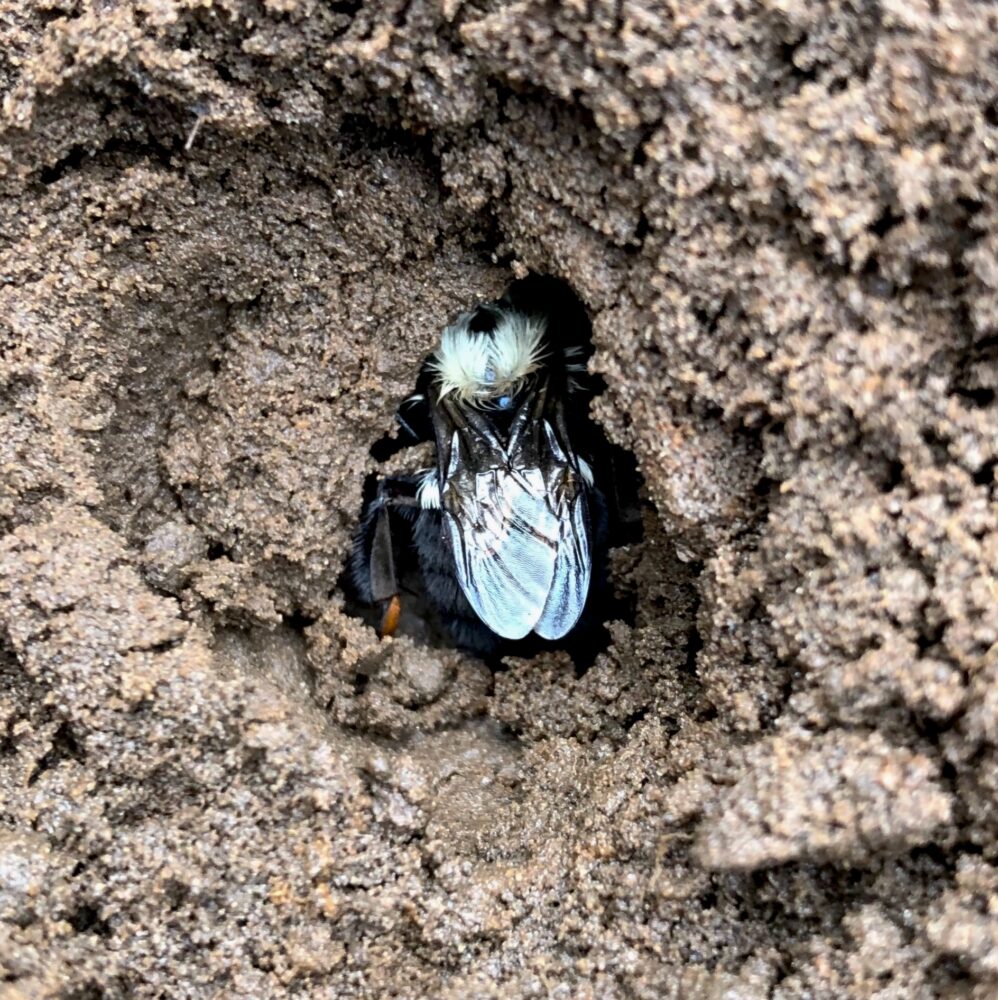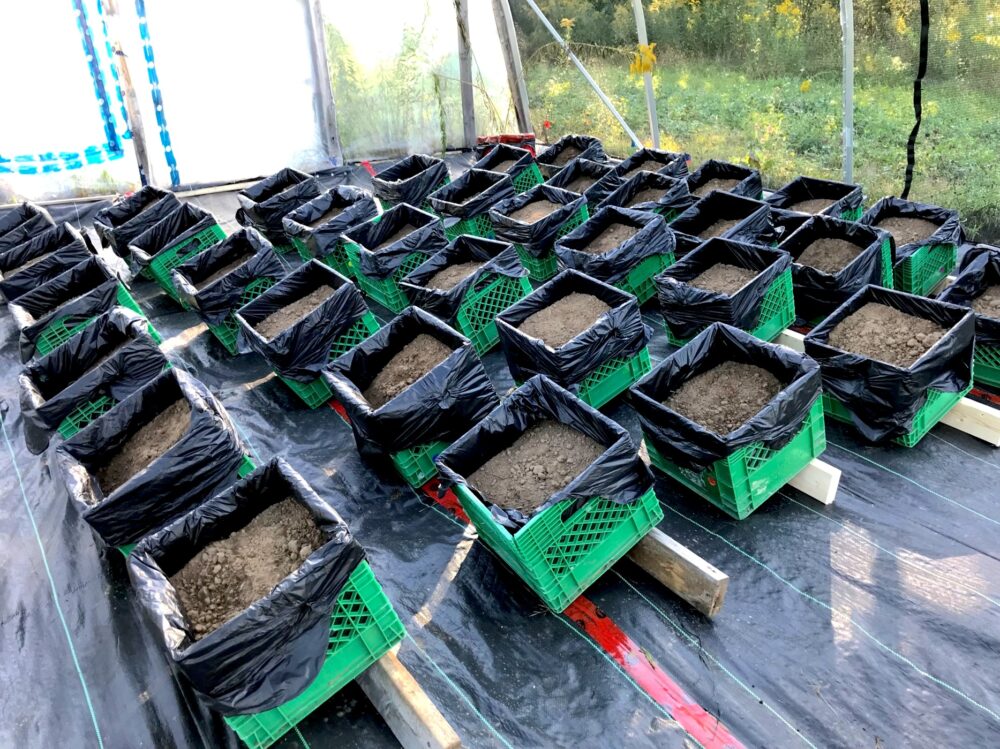An “alarming” discovery from University of Guelph researchers raises concerns for bumblebee health, survival and reproduction.

U of G environmental sciences researchers Drs. Nigel Raine and Sabrina Rondeau have found that bumblebee queens are more likely to hibernate in soil contaminated with pesticides than in clean soil – for reasons they still don’t quite understand.
“Some bee behaviours are not well understood, and we wanted to see if these bumblebee queens exhibited avoidance behaviour that might reduce their risk of harm from pesticide exposure in the field,” Raine says. “But these results were alarming.”
The team conducted field experiments in which newly emerged queens of the common eastern bumblebee (Bombus impatiens) were left to fly freely in outdoor enclosures, mate and then choose a site in which to hibernate for the winter.
The choice was between clean soil or soil contaminated with one of five common pesticides, including insecticides and fungicides, across different concentrations.
The School of Environmental Sciences researchers then carefully searched through the soils for hibernating bumblebee queens. They found queens avoided the pesticide-free soil and, in fact, were about twice as likely to be drawn to the pesticide-contaminated soil.
Most bees in the study survived, but other consequences for the colony are highlighted in the study, recently published in Science of the Total Environment.

The findings surprised both Raine and Rondeau, who is now a post-doctoral researcher at the University of Ottawa. The study was part of Rondeau’s PhD research in U of G’s Ontario Agricultural College and was recently featured in The New York Times.
“This raises serious concerns for bumblebee health,” says Raine, “especially as this group of important insect pollinators already face many challenges.”
Bumblebee queens typically hibernate underground during winter before emerging in spring to start new colonies. Researchers wanted to investigate how bees respond to contaminants at this key but vulnerable life stage.
Previous studies showed that pesticides on crops can either attract or repel bees, depending on the type, the environmental situation and the concentration used. Raine and Rondeau initially speculated that bumblebee queens would simply choose to avoid pesticide residues in soil.
“We were not expecting this result,” Rondeau says. “It suggests that queens could actually prefer these contaminated soils, though we don’t yet fully understand why.”
Pesticides make soil more appealing, but more research needed

One possible explanation is that pesticides altered the soil properties and made it more appealing to the queens.
For example, the fungicides used in the study could have killed soil fungi and nematodes, and queens might avoid soils with fungi because they can be harmful during hibernation.
Another possibility is that the queens could have developed an “acquired taste” for pesticides, as researchers put it, due to prior exposure in their environment.
They might also be looking for something new, as novelty-seeking behaviour is common for bees and often leads the colony to discover new resources.
More research is needed to fully understand the mechanisms behind this unexpected queen behaviour. But the findings suggest the need to reconsider how pesticides are used and managed in agricultural settings.
Environmental risk must account for pesticides in soil
Exposure to pesticides is contributing to a worldwide decline of insects.

In addition to sometimes being fatal, exposure to pesticides can impair bees’ movements and their ability to collect and feed on nectar and pollen. These effects could have dire consequences for our global food system.
Questions remain about whether bumblebee queens would be attracted to contaminated soil in wider spaces than those used in the experiments, where real-world scents and field characteristics might mask the presence of pesticides. Further research is also needed to determine if these findings apply to other bee species.
Current pesticide risk assessments do not take into account soil as a key route of exposure for bees. The study calls for improvement to such assessments so that they consider this newly discovered behaviour.
“As we move forward, it’s crucial to investigate how agricultural practices – like the types of pesticides used, the methods of application and the management of vegetation – impact the accumulation of pesticide residues in soils where queens are likely to hibernate,” Rondeau says.
“By better understanding how pesticide residues accumulate in soils and how they affect bees, we can find ways to protect these essential pollinators.”
This work was supported by the Ontario Ministry of Environment and Climate Change (MOECC) Best in Science grant, Natural Sciences and Engineering Research Council (NSERC), and the Food from Thought: Agricultural Systems for a Healthy Planet Initiative, by the Canada First Research Excellence Fund.
Rondeau was supported by graduate scholarships from The Arrell Food Institute, the Fonds de recherche du Québec – Nature et technologies (FRQNT) and the Ontario Agricultural College (OAC). Raine is supported as the Rebanks Family Chair in Pollinator Conservation by the Weston Family Foundation.
Contact:
Dr. Sabrina Rondeau
srondeau@uottawa.ca
Dr. Nigel Raine
nraine@uoguelph.ca
